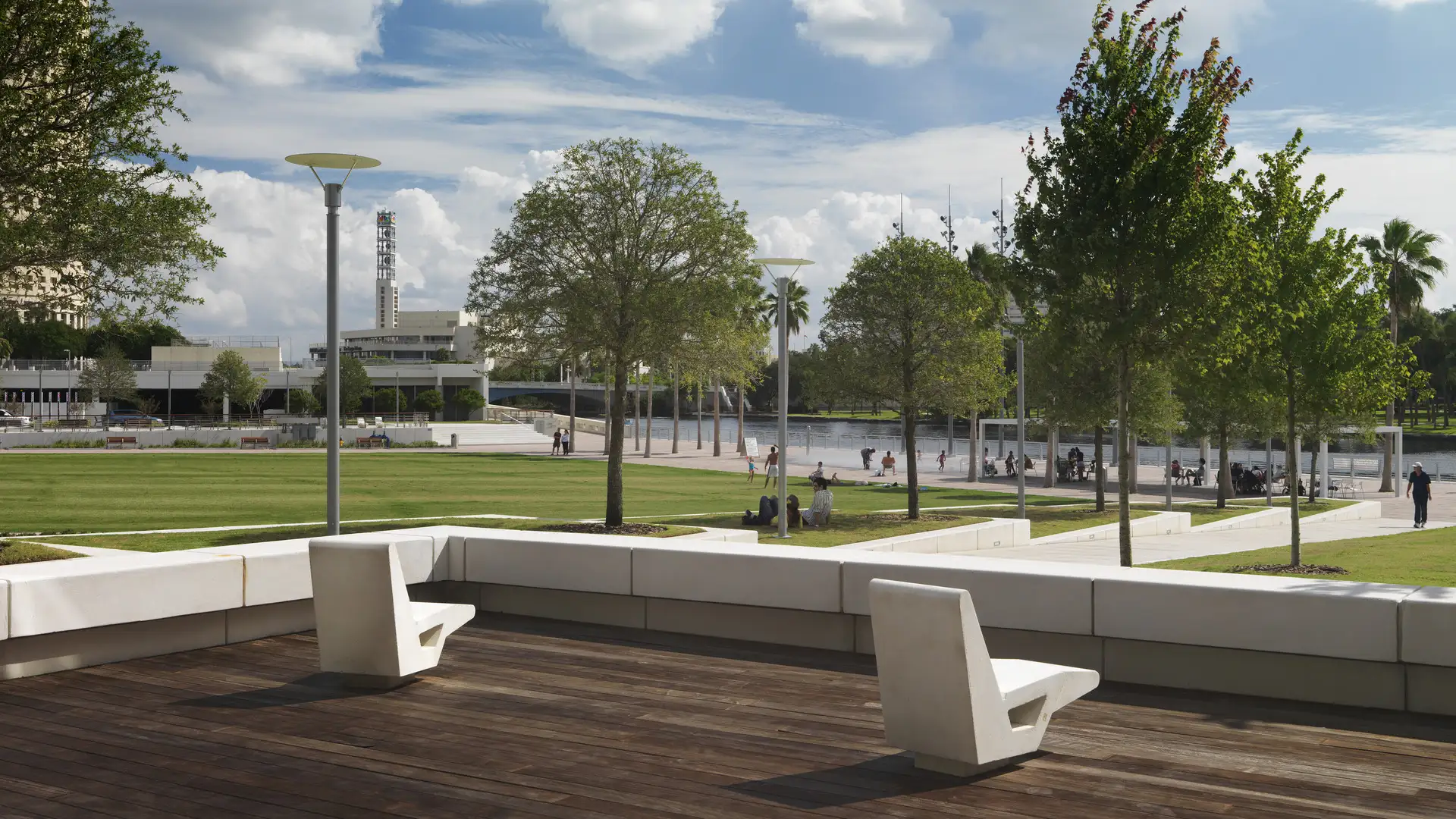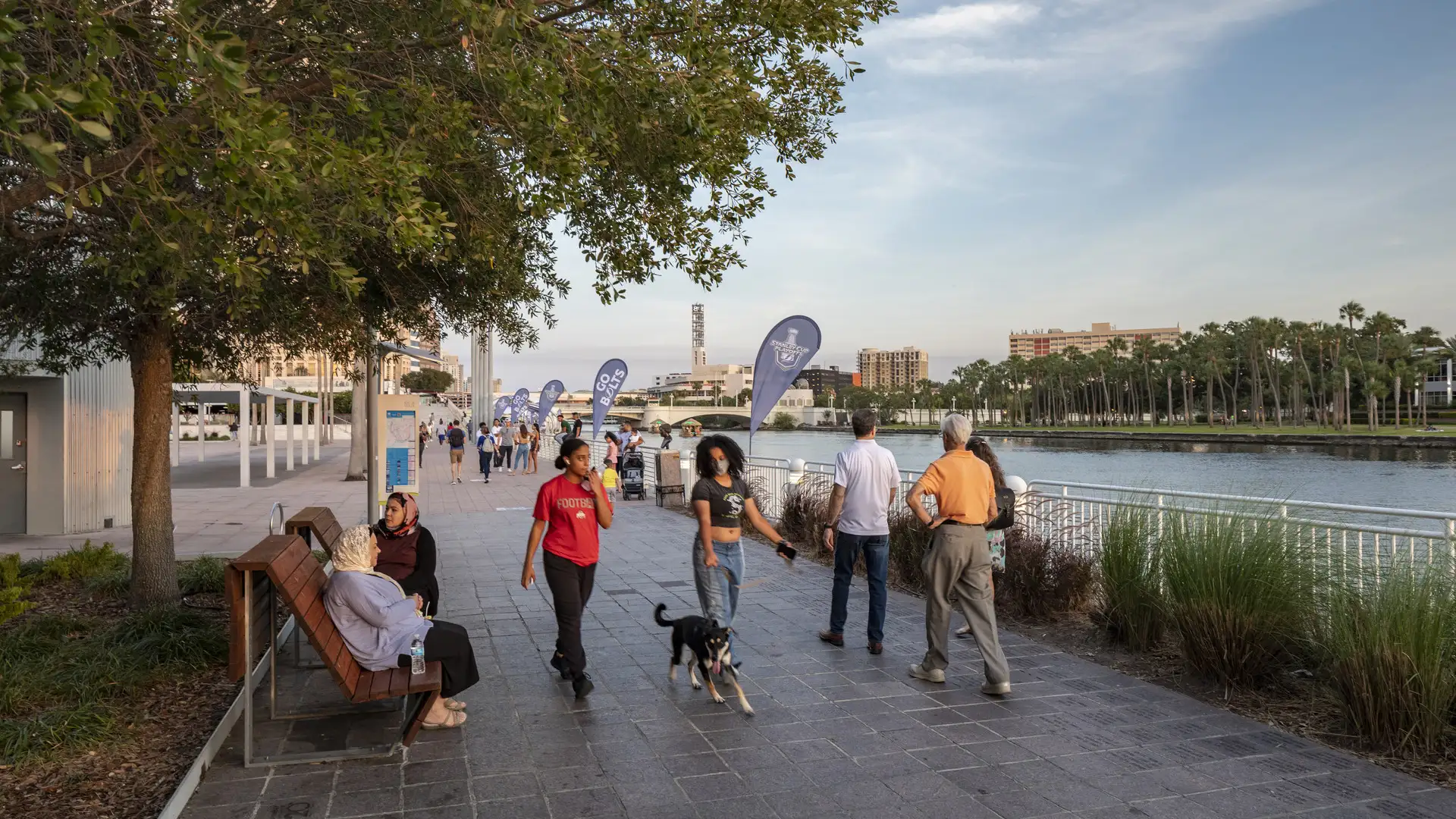Curtis Hixon Waterfront Park has been heralded as Tampa’s missing “here” and the crown jewel in the city’s Riverwalk, a bold urban plan conceived to reactivate the Hillsboro River and downtown Tampa. The master plan sets the park as the district’s focal point, positioning the Riverwalk, museums, and park buildings to the park and the waterfront. The plan boldly called for the removal of an old museum and sprawling parking garage that had denied the city access to its riverfront.
The park’s southern border connects with the renovated Kiley Garden, which had previously been elevated above grade, discouraging public access and enjoyment. A pedestrian bridge now connects both park spaces and gives new meaning to the garden. The Tampa Museum of Art and Glazer Children’s Museum have sprouted culture and family activities at the park, near the Great Lawn, an area surrounded by trees and scaled to accommodate large and small events. The lawn is framed on either end by fountain plazas that can become venues for larger festivals. The design carves into the sloping topography to reveal terraced lawn panels that spill down from the museum terraces and garden promenade. A linear park pavilion with restrooms, offices, a café, a visitor center, and a restaurant with unparalleled river views activates the southern edge.
The interactive louver and mist fountains at either end of the park are designed to capture Tampa’s imagination while cooling its residents. Distinctive fountains, pavement, and pylon lights extend the nighttime draw of citizens to the glowing park. Located along the Riverwalk and taking sculptural cues from the Museum of Art are a contemporary play area and urban dog run. Innovative lawn rafts, timber chairs, concrete loungers, and picnic tables reflect a commitment to 21st-century comforts beyond the conventional bench, drawing enthusiastic crowds to downtown Tampa’s new front lawn.
Fuyang Riverfront
Seizing the area’s reputation for “one of the best mountain and water views in the world,” the natural framework along both sides of the Fuchun River inspires this plan integrating urban spaces with landscape to create a harmonious skyline. Fuyang flourishes with economic prosperity while honoring its vibrant cultural heritage.
The scope includes urban d...
SIPG Harbor City Parks
This new riverfront development is located on the Yangtze River in the Baoshan District of Shanghai. This area boasts some of the highest shipping activity in the world. However, in recent years this single-function industrial zone has given way, allowing for waterfront parks to develop. Within this historically layered water front the Baoshan Park and Open Sp...
Ningbo East New Town Civic Plaza
As an extension of the Ningbo East New Town Government Center, this civic plaza extends the geometry and ecology of SWA’s past work in the city. A central civic axis runs from the government buildings to the Dongqian Lake edge, providing a large, flexible gathering/event space adjacent to an expansive lawn as well as sweeping views of the water. Per city plann...
Xinyang Suo River
SWA recently completed a master plan for a 36 km length of the Xingyang Suo River located in Xinyang, China. Located on a site at the confluence of an elaborate network of waterways, the River has served as a transportation system for the movement of goods, services and people between Xingyang, Beijing and the coastal cities to the Southeast. This has transfor...

















